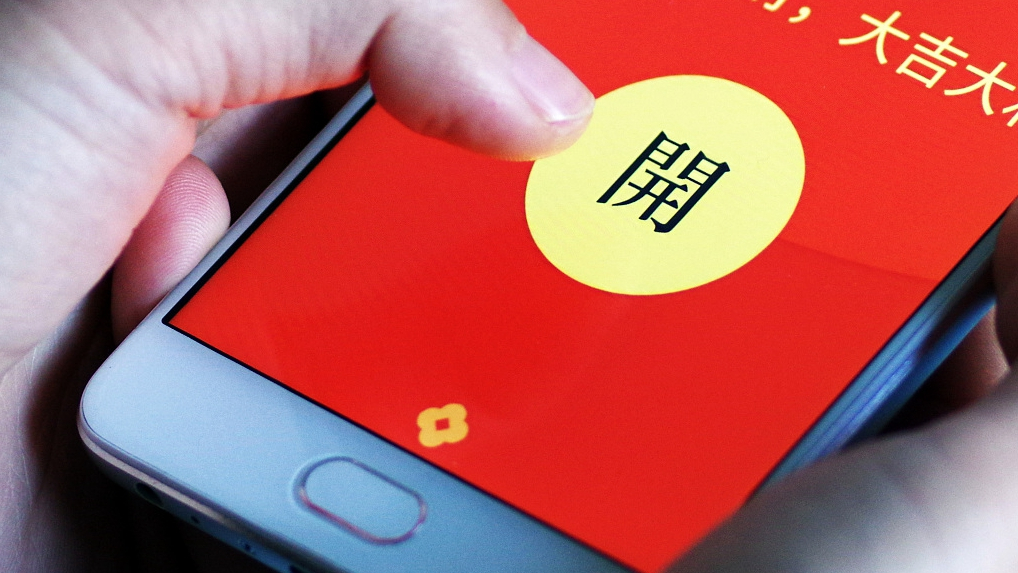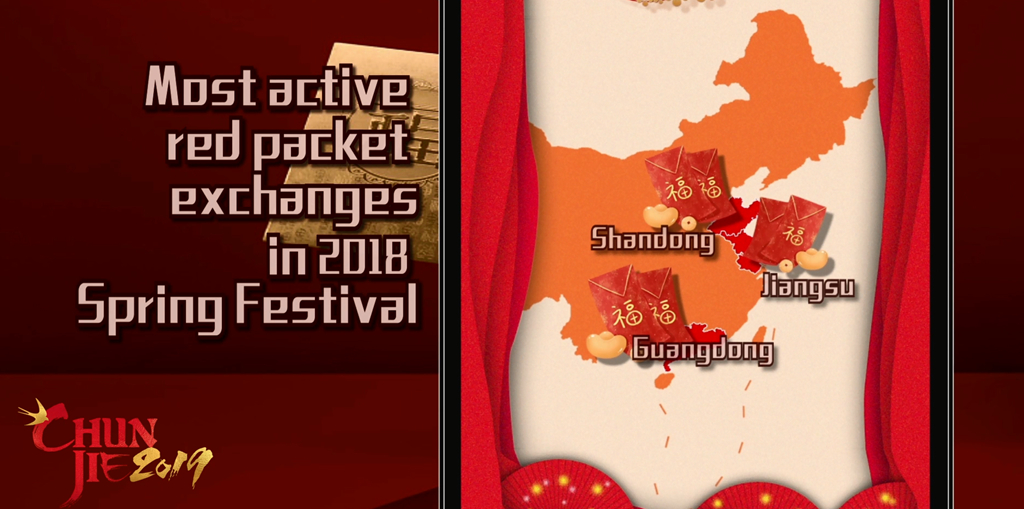
Technology
20:08, 03-Feb-2019
Something you may want to know about 'Hongbao'
By He Weiwei
01:57

In this new era of mobile payments, sending electronic "Hongbao," or red packets, has become a " modern tradition" for the Chinese Lunar New Year.
Take popular messaging platform WeChat. It is China's favorite instant messaging app with over 1 billion users worldwide every day. Seven hundred sixty-eight million of them – equivalent to over half of China's total population – sent red packets during the 2018 Spring Festival.
That is a big jump compared with only 5 million in 2014, when WeChat first launched the function.

CGTN Photo
CGTN Photo
Here's something you may want to know about "Hongbao."
When and who to send a Hongbao?
Traditionally, older Chinese distribute money in paper red packets to younger people during the Lunar New Year and other festive occasions to pass on good fortune, such as from parents to their children, from married adults to unmarried ones in the family, and from employers to employees. But as the red packets turn digital, it's quite common for people to exchange electronic Hongbao as greetings, regardless of age.
How much money for each Hongbao?
Amounts in even numbers are generally preferred, since Chinese people's favorite numbers usually contain positive symbolic meanings. For example, "8" rhymes with the Chinese word for good fortune, "6" means everything's going well, and "9" means longevity.
So for the digital Hongbao, amounts like "8.88" and "6.88" are very popular, especially among young users. But for paper red packets given to others in person – people still prefer larger amounts, usually more than 100 yuan (about 14.8 U.S. dollars).
China: No.1 in mobile payments transactions

CGTN Photo
CGTN Photo
Behind the popularity of electronic red packets is China's surge in mobile payments.
According to the Cyberspace Administration of China, in 2017, China's mobile payment transactions reached 202 trillion yuan (about 30 trillion U.S. dollars), the largest amount worldwide.
Report on Mobile Payment Security in 2018 says the three most popular sites for mobile payment include retail stores, online shopping and public transportation.

SITEMAP
Copyright © 2018 CGTN. Beijing ICP prepared NO.16065310-3
Copyright © 2018 CGTN. Beijing ICP prepared NO.16065310-3